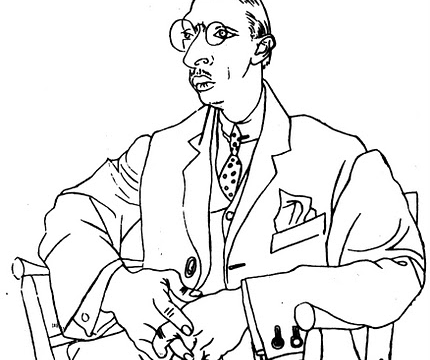
Roughly 50 years after some of Stravinsky’s most influential works, Arthur Berger published his paper “Problems of Pitch Organization in Stravinsky .” There he attempted to define a new theory about Stravinsky’s music and, in the process, coined the term “octatonic.” In contrast, in as early as 1906 Russian music theorist Boleslav Yavorsky (1877–1942) was documenting theories that would influence modern Russian music theory and would be applicable to the music of Rimsky-Korsakov, Scriabin, Stravinsky, and Prokofiev.
In his theories, Yavorsky came to the conclusion that voice leading, as in the context of note tendencies dependent upon vertical and horizontal intervals, was to be replaced with pitch leading and pitch gravitation. The “resolution” of the tritone would become the predominant force of defining pitch gravitation within a “mode” (lad, in Russian), and pitch leading is how pitches move, typically along these gravitation paths.
Yavorsky proposed that the resolution of the tritone be the primary cell used to create his modes. He defines the two systems shown below: one where a tritone resolves to an i.c. 4 (interval class 4 means an interval of four half-steps, or the equivalent of a major third) or i.c. 8, and one where a perfect fifth resolves through a perfect fourth to an i.c. 3, or the inverse of the intervals resolve to an i.c. 9:

Tritone Resolution Systems in Yavorsky’s Theories
Open noteheads represent stability; closed represent instability. The two or three-note path from an unstable tone to a stable tone is called a conjunction and is marked with a slur. Pitch gravitation follows conjunction paths from instability to stability.
These systems are the building blocks for Yavorsky’s modes. They can be combined in as many ways the octave will allow to create collections where a pitch class is either stable or unstable. The stable pitch classes within a mode are collectively known as the tonic, and the unstable pitch classes are collectively known as the connecting moment. Consider the mode that Yavorsky calls the Duplex-Major Mode, the manifestation of the Petrushka chord:

Yavorsky’s Duplex-Major Mode
When the mode is laid out as a scale, the conjunctions can be graphed to show the pitch gravitations moving from the closed noteheads to the open noteheads:

Yavorsky Pitch Gravitations
Pitch gravitations are an expanded concept of the scale degrees 7 and 4 pitch tendencies within diatonic scales, and their function underlies the perception of stability in the lad’s tonic. When design of the mode and pitch gravitations are considered, an analysis of music such as Stravinsky’s can be more nuanced than an octatonic-based analysis. Inversely, Yavorsky’s theories offer an alternate approach to harmonic and melodic thinking in composition.
I have found relatively few sources about Russian music theory written in English. A complex yet comprehensive source is Gordon McQuere’s translation of Protopopov’s text The Elements of the Structure of Musical Speech. However, it is difficult reading, and I suggest that one start with Philip Ewell’s excellent and concise introduction to Russian Music Theory.
Ewell’s articles demonstrate several different modes and offer some analysis of works using Yavorsky’s modes. I have enjoyed experimenting with creating different modes and improvising with them. At times, when creating harmonic motion that follows the pitch gravitations of his modes, I have ended up with music that sounds like Scriabin. At other times, I create new ideas that I want to explore in future compositions.
In a later post I’ll discuss a bit of what I did with the third movement of my piano concerto using modes inspired by Yavorsky’s theories.
Why haven’t there been reliable translations made into English? I’m also curious about the Samuil Feinberg textbook (not the ‘Pianism as Art’ article, which has).
Translations would be nice, although a niche market I’m sure! Thanks for mentioning Samuil Feinberg. Prompted me to pop on some of his music!